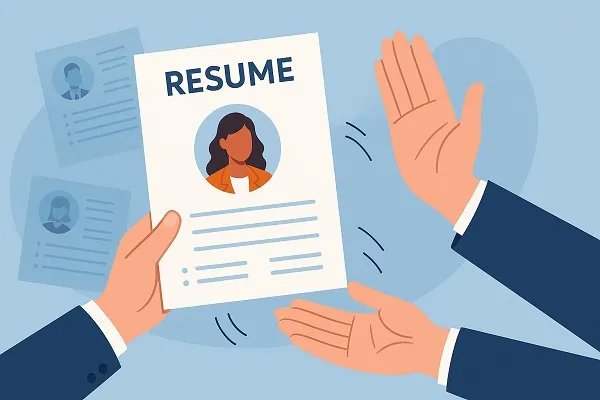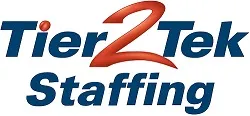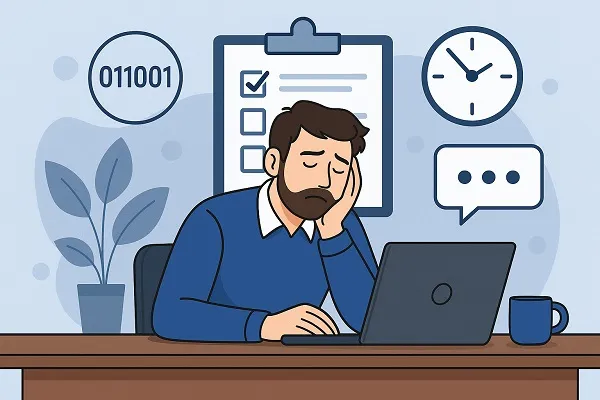Tech interview fatigue is becoming an increasingly common problem among candidates and employers alike. With multi-round processes, time-consuming take-home projects, and inconsistent feedback loops, the standard hiring pipeline often pushes top talent away before they even reach the final stage.
This article explores the causes of tech interview fatigue, how it affects both sides of the table, and most importantly, how to speed up the process without compromising the quality of hires.
What Is Tech Interview Fatigue?
Tech interview fatigue refers to the exhaustion and frustration experienced by job candidates who go through extended, repetitive, or disorganized technical interview processes.
This fatigue can stem from:
- Multiple coding rounds spread over weeks
- Unclear timelines and long response delays
- Repetitive problem-solving tasks with little relevance
- Lack of communication or feedback
- Excessive technical deep-dives before mutual fit is established
It doesn’t just affect job seekers. Employers also lose momentum, suffer from extended time-to-hire, and may see top candidates ghost or decline offers due to burnout or better opportunities.
Why the Traditional Process Is Broken
The average technical interview process includes:
- Resume screening
- Recruiter screen
- Technical phone screen
- Take-home assignment or live coding
- System design interview
- Behavioral interview(s)
- Final on-site or virtual loop
While each of these steps might seem justified on its own, collectively they can stretch over 4 to 6 weeks or more. In a competitive market, that’s simply too long.
Common Pitfalls in Current Hiring Workflows
- Redundancy: Asking the same basic questions across multiple stages.
- Slow scheduling: Delays due to interviewer availability.
- Uncalibrated expectations: Lack of alignment between hiring managers and recruiters.
- Overemphasis on algorithms: Too much focus on Leetcode-style questions instead of real-world problem-solving.
- One-size-fits-all assessments: Treating all candidates the same, regardless of experience level.
Signs Your Hiring Process Is Causing Fatigue

If you notice any of the following, it’s time to revisit your process:
- High drop-off rates mid-process
- Candidates ghosting or withdrawing
- Interview feedback taking more than 48 hours
- Hiring managers struggling to commit to decision-making
- Declined offers due to competing timelines
Even highly motivated candidates can become disengaged if they feel like they’re jumping through endless hoops.
How to Speed Up the Tech Interview Process
1. Streamline Interview Stages
Audit your current process and cut any steps that don’t provide unique value.
Try this simplified structure:
- Initial recruiter screen (15–20 min)
- Technical assessment (live coding or take-home)
- Final team interview (technical + behavioral combined)
This can shorten your time-to-decision from weeks to 7–10 days.
2. Use Project-Based or Portfolio Reviews
Instead of forcing candidates to do new take-home projects, evaluate work they’ve already done. Senior engineers, in particular, often have public code samples, GitHub repos, or open-source contributions.
Benefits include:
- Saves candidates time
- Provides more authentic insight into real skills
- Encourages discussion of past decisions and context
3. Offer Flexible Assessment Options
Some candidates thrive in live coding interviews. Others perform better with asynchronous work.
Let them choose between:
- A short take-home project
- A scheduled live-coding session
- Technical discussion of a past project
This empowers the candidate and improves the signal from your assessment.
Improve Communication and Feedback Loops

Set Clear Timelines
Let candidates know upfront what the process looks like and how long each step takes. For example:
“Our process has three steps and takes approximately 10 days from start to offer.”
Follow Up Quickly
Respond to each completed round within 24–48 hours. Delayed communication increases the chance of losing candidates to faster-moving competitors.
Assign a Point of Contact
Give each candidate a consistent person—usually the recruiter or hiring manager—who keeps them updated and answers questions.
Empower Hiring Teams with Better Tools
Use Scorecards and Rubrics
Clear evaluation criteria reduce indecision and avoid backtracking. All interviewers should align on what defines a “hire” versus a “no hire.”
Example rubric areas:
- Technical depth
- Communication
- Problem-solving
- Culture contribution
Record and Share Interviews Internally
Tools like CoderPad, Karat, or interviewing.io allow you to record interviews for asynchronous review. This reduces the need for multiple interviewers to be present at the same time, saving hours of scheduling.
Respect Candidate Time
Shorten Take-Home Projects
If you do use take-homes, they should take no more than 2–4 hours to complete. Anything longer becomes a burden and can eliminate strong but time-constrained candidates.
Pay for Extensive Work
If you expect more than a few hours of work, compensate candidates for their time. This is standard in design hiring and is gaining traction in engineering as well.
Let Go of “Perfect” Candidates

One of the biggest causes of tech interview fatigue is excessive filtering in search of a unicorn. Instead, focus on:
- Hiring for potential over perfection
- Cultural contribution over culture fit
- Growth mindset over niche experience
If someone ticks most of the boxes and shows strong learning capability, they’re likely a great hire—even if they flub one obscure algorithm.
Consider Trial-to-Hire or Contract-to-Full-Time Options
For roles where it makes sense, offer a paid trial period or a short-term contract before converting to full-time. This allows both sides to assess fit in a lower-pressure environment and shortens the interview cycle.
The Risk of Not Evolving Your Process
Failing to address interview fatigue means:
- Losing top candidates to faster-moving teams
- Damaging your employer brand through negative Glassdoor reviews
- Wasting interviewer hours on drawn-out decisions
- Missing hiring targets due to bottlenecks
Companies that adapt quickly and respect candidates’ time will consistently win the best talent. Those that don’t will find themselves with empty roles and diminishing pipelines.
Speeding up the tech interview process isn’t about cutting corners—it’s about optimizing for clarity, respect, and efficiency. Candidates want to solve meaningful problems, not navigate bureaucratic hiring mazes. By streamlining stages, improving communication, and tailoring assessments, you can eliminate tech interview fatigue and build stronger teams—faster.
Content reviewed and published by Tier2Tek Staffing Editorial Team .

